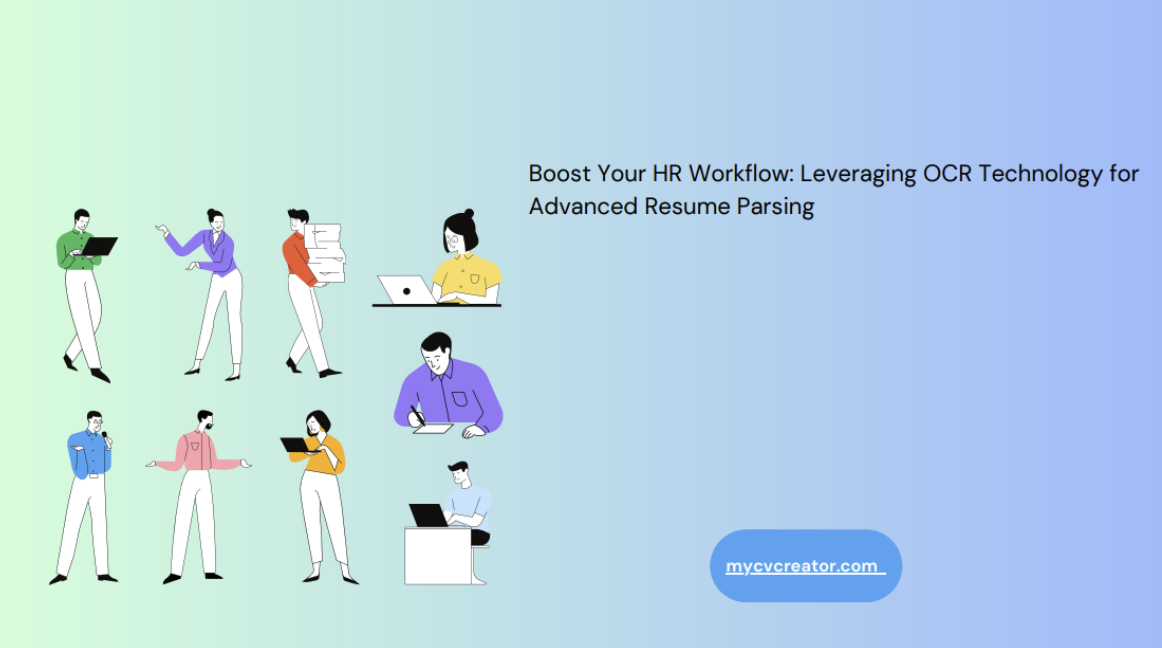Boost Your HR Workflow: Leveraging OCR Technology for Advanced Resume Parsing
Human resources is one of the core departments of any company. It is responsible for solving any issues employees may have related to work. They are also responsible for hiring and firing.
Naturally, that means they deal with a metric ton of CVs. Reading and vetting that many documents is a time-consuming task. That’s why technologies like OCR are required to ease that task.
Today, we are going to discuss how OCR helps with shortlisting CVs and reduces the time required for hiring managers to select good candidates.
How Does OCR Work?
The detailed working of OCR would require an article of its own, so we will only discuss it at a surface level.
The problem that OCR (optical character recognition) solves is the recognition of text inside non-textual formats like images. You see, computers cannot understand that there is text inside an image because, to them, text is represented by ASCII code or UNICODE. Images, on the other hand, are a cluster of pixels on a plane.
If there is text inside an image, a computer will not understand it due to the format. With OCR, this problem is solved.
In OCR, a computer is taught how to recognize the shapes of characters in images. Then, convert those characters into their ASCII/UNICODE representation.
OCR tools are commonly used to extract text from images.
Role of OCR in Vetting CVs
Improve ATS Function
Typically, most companies use an ATS (Applicant Tracking System) to quickly sift through digital CVs. However, most ATS software only works with text.
When a scanned resume or an image of a resume comes in, the ATS software is at a loss to deal with it. This is because scanned CVs and images are in non-text formats. So, ATS software cannot parse them.
This is where OCR technology comes in. A simple image to text converter can extract the text from the scanned CVs and make it available to the ATS. This way, no CV is left out.
Improves CV Storage and Searchability
In the introductory part of this article, we mentioned that companies have to deal with a massive number of CVs. Even with an ATS, it can take multiple days to go through the shortlisted CVs.
In the meantime, the CVs need to be stored digitally. This becomes a problem if you have CVs that are in physical form, i.e., someone handed in a printed CV.
Now, there is no justification to throw out a CV because it was handed in an inconvenient format. HR personnel simply need to take an image of the CV and use an OCR tool to convert it into a digital format.
This digital format is easy to store and can be searched for later using the applicant’s name.
Improves Efficiency
Manual transcription and physical storage of files are quite inconvenient. They take a long time, and there is always the chance of human error. A misplaced CV can be the difference between an excellent hire and a mediocre one.
We already know that OCR can convert images to digital text. We also know that digital text is very easy to store and search.
However, the key point here is transcription. Manual transcription can take anywhere from a few minutes to a few hours, depending on the document's length.
With OCR, that time is reduced to a few seconds. Integrating tools backed by recruitment metrics makes HR operations even faster and more efficient.. Hiring managers can easily convert CVs into digital formats and then review them at a later date or feed them into an ATS pipeline.
Conclusion
OCR technology can improve HR workflow in various ways. They improve the function of ATS software, help you store CVs digitally, and make them more searchable. All in all, they improve the efficiency of hiring new employees by making the dull, drab, and slow part of the process extremely fast and convenient.
https://join.slack.com/t/backlink-exchangehq/shared_invite/zt-2sajhstti-aB6t1evXW6hhiwujE3zCHw.









